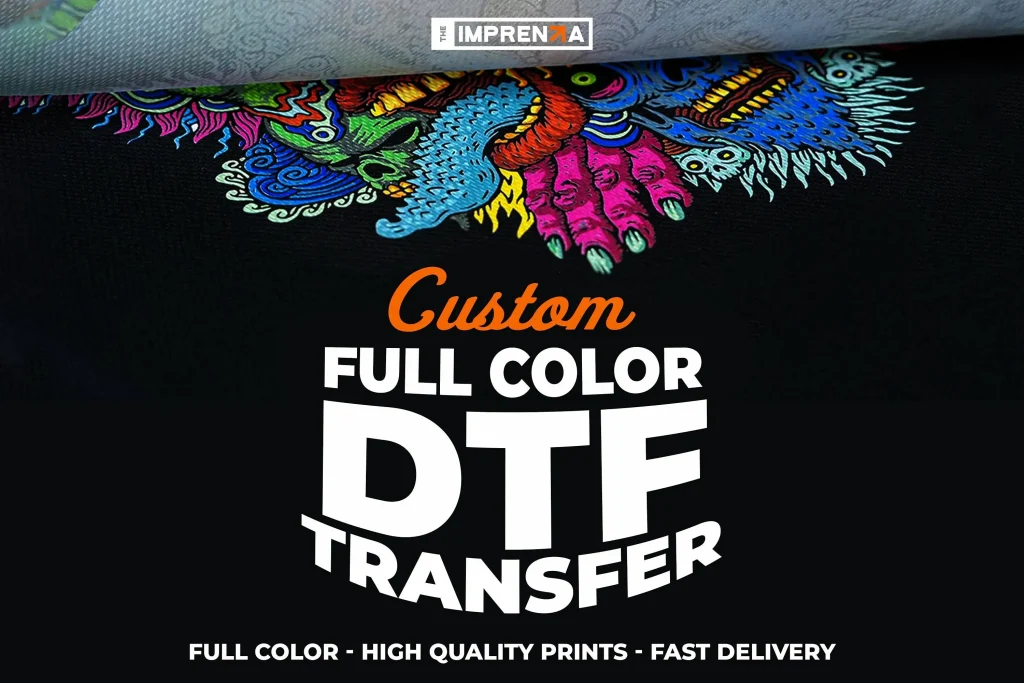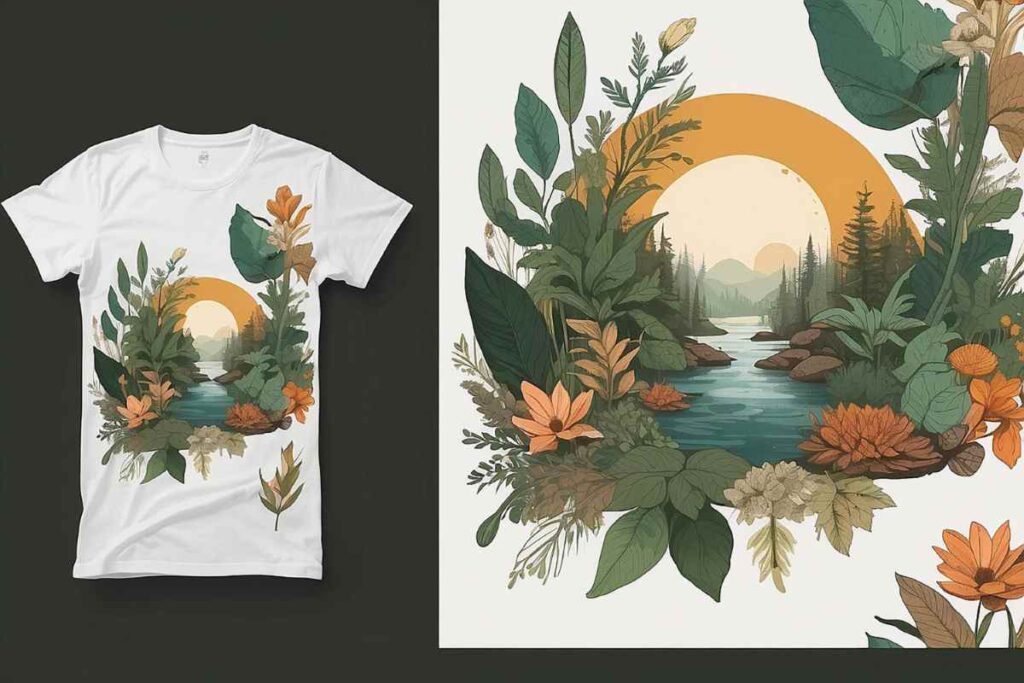DTF Transfers, or Direct-to-Film transfers, are revolutionizing the world of custom apparel printing, offering a modern alternative to traditional methods. Unlike the standard screen printing techniques that can be cumbersome, the DTF printing process utilizes a specialized film to print vibrant designs that can be effortlessly transferred onto various fabrics. This innovation not only heightens the quality of prints, ensuring sharp and colorful results, but also enhances efficiency for businesses looking to meet consumer demand swiftly. As more brands embrace sustainable printing technology, the advantages of DTF printing, including its use of eco-friendly inks, are becoming increasingly appealing. Join us as we explore the intricate mechanics behind DTF transfers, uncovering the myriad benefits they bring to the ever-evolving textile industry.
Direct-to-Film (DTF) technology represents a significant leap in the realm of garment decoration, showcasing a compelling alternative to more conventional printing techniques. This innovative approach to printing enables intricate designs to be transferred onto fabric through a seamless process that combines artistry and advanced technology. Often lauded for its adaptability, this method is particularly favored in custom apparel printing due to its ability to produce high-quality images on diverse fabric types. As businesses increasingly seek sustainable solutions, techniques like DTF printing stand out as environmentally responsible choices, relying on water-based inks to minimize ecological footprints. In this discussion, we will delve into the operation and impact of this transformative printing method, highlighting why it has become a cornerstone in the apparel industry.
The Mechanics Behind the DTF Printing Process
Understanding the Direct-to-Film (DTF) printing process is crucial for anyone interested in custom apparel and textile solutions. The journey begins with the creation of a digital design, which is subsequently printed onto a specially formulated film using high-quality water-based inks. This initial printing phase highlights the sophistication of DTF technology, as it can capture fine details and a wide spectrum of colors, ensuring each design stands out. After printing, the application of a hot melt adhesive enhances the bond between the ink and the fabric, setting the stage for a successful transfer.
Following the ink application, the adhesive is cured through a controlled heating process, which solidifies the design’s integrity and prepares it for transfer. Lastly, a heat press aligns the printed film to the fabric, resulting in a seamless transfer that retains the vibrant colors and intricate designs. This innovative approach to textile printing not only simplifies the process but also provides businesses with a reliable technique for producing high-quality garments quickly and affordably.
Why Choose DTF Transfers for Custom Apparel Printing
DTF transfers are quickly becoming the preferred choice for custom apparel printing due to their numerous advantages over traditional methods. One of the most significant benefits is their versatility; DTF technology can be utilized on various materials, from cotton to polyester and blends, empowering businesses to serve a diverse customer base. This adaptability means companies can quickly pivot to meet market demands without investing in different printing processes. Additionally, DTF printing excels in delivering vibrant prints with impeccable detail, making it ideal for intricate designs that stand out.
Another key aspect of DTF transfers is their cost-effectiveness, especially for small to medium print runs. Unlike screen printing, which involves hefty setup fees, DTF allows for economical production, making it accessible to startups and small businesses looking to make their mark in the competitive custom apparel market. With the increasing consumer preference for personalized products, DTF prints provide an avenue for businesses to offer unique, high-quality items that resonate with their audience.
Environmental Impact: Is DTF Printing Sustainable?
In today’s eco-conscious world, sustainability is a crucial factor for businesses, especially in the textile industry. DTF transfers stand out as a sustainable printing technology because they utilize water-based inks that significantly reduce harmful emissions compared to traditional printing methods. This environmentally friendly approach resonates well with consumers who value sustainable practices, turning DTF printing into a responsible alternative that minimizes the carbon footprint of custom apparel production.
Moreover, as many industries seek to align with environmentally responsible practices, DTF printing contributes to reducing material waste and energy consumption during the production cycle. This not only satisfies consumer demands for eco-friendly products but also enhances corporate responsibility for businesses. Embracing DTF technology can ultimately lead to greater market differentiation, positioning companies as leaders in sustainability within the competitive landscape.
Recent Innovations in DTF Printing Technology
As DTF printing technology continues to develop, recent innovations have resulted in enhancements that further elevate the quality and durability of prints. New ink formulations have emerged, designed not only for vibrant colors and sharp details but also for improved wash resistance, durability, and longevity. These advancements are crucial for businesses that prioritize quality and customer satisfaction, ensuring that their products maintain their appeal even after multiple washes.
Additionally, the industry is witnessing a shift towards more sustainable practices with the introduction of eco-friendly inks. These innovations contribute to reducing environmental impact while meeting the growing demand for customization in the fashion industry. As DTF technology evolves, businesses can leverage these advancements to provide consumers with unique and high-quality apparel products that align with current trends and sustainability expectations.
Market Trends Supporting the Growth of DTF Printing
The textile and apparel market is undergoing significant transformations, with consumer expectations for personalized and high-quality products driving the demand for effective printing solutions. The rapid rise of Direct-to-Film transfers in the landscape of custom apparel printing highlights how businesses can quickly respond to market trends through DTF technology. The flexibility and adaptability of DTF allow entrepreneurs to capitalize on limited edition runs or promote event-specific apparel without the extensive setup times typically associated with other printing methods.
Moreover, as businesses pivot to meet the increasing demand for fast and custom products post-pandemic, DTF printing provides a practical solution that combines speed and quality. This capability fosters enhanced customer satisfaction and can significantly drive repeat business, particularly among consumers seeking personalized products. Understanding these market trends is essential for businesses in the apparel and textile sector looking to maintain competitiveness and resonance with their audience.
Enhancing Customer Satisfaction with High-Quality DTF Prints
Customer satisfaction in the apparel industry hinges on the quality of the products offered, and DTF transfers excel in this domain. The ability to produce vibrant, detailed, and durable prints ensures that customers receive apparel that not only looks fantastic but also withstands everyday wear. This level of quality is critical for retaining clients and garnering positive reviews, which can significantly impact a brand’s reputation.
Additionally, offering high-quality DTF prints directly correlates with increased customer loyalty. Satisfied clients are more likely to return and recommend a brand to others, creating a positive feedback loop that supports business growth. By investing in the DTF printing process, companies can deliver exceptional products that not only meet but exceed customer expectations, leading to lasting relationships and success in the competitive apparel market.
Frequently Asked Questions
What is the Direct-to-Film (DTF) printing process?
The Direct-to-Film (DTF) printing process involves a straightforward yet innovative technique where designs are printed onto a special film using eco-friendly water-based inks, applied with a hot melt adhesive, and then transferred onto fabric with a heat press.
What are the advantages of DTF printing compared to traditional methods?
The advantages of DTF printing include its versatility on different fabric types, vibrant quality prints with intricate details, cost-effectiveness for small runs, and environmentally friendly practices through the use of water-based inks.
How does DTF Transfers support sustainable printing technology?
DTF Transfers support sustainable printing technology by utilizing water-based inks that reduce harmful emissions and waste, aligning with eco-friendly practices that the textile industry is increasingly adopting.
Is DTF printing suitable for custom apparel printing?
Yes, DTF printing is highly suitable for custom apparel printing as it enables quick production of vibrant designs tailored to customer needs, making it an ideal choice for businesses aiming to offer unique and personalized products.
What types of fabrics can DTF Transfers be used on?
DTF Transfers can be used on a wide range of fabrics, including cotton, polyester, and various blends, allowing for great flexibility in meeting diverse customer demands in the textile market.
What innovations are currently shaping the future of DTF printing?
Recent innovations in DTF printing include improved ink formulations that increase durability and wash resistance, as well as advancements in eco-friendliness, enhancing the method’s sustainability profile in the custom apparel industry.
| Key Points | Description |
|---|---|
| DTF Transfer Process | A multi-step process involving design creation, printing on film, adhesive application, curing, and heat transfer to fabric. |
| Advantages of DTF Transfers | Includes versatility, vibrant prints, cost-effectiveness, and eco-friendly materials. |
| Recent Innovations | Improved ink formulations for durability and wash resistance, along with more sustainable practices. |
| Significance of DTF Transfers | Supports sustainability, adaptability to market trends, and enhances customer satisfaction. |
Summary
DTF Transfers represent a revolutionary advancement in textile printing technology, characterized by their ability to combine vibrant graphics with sustainability. This method not only caters to diverse fabric types and intricate designs but also meets the rising demand for eco-friendly practices in the garment industry. As we move deeper into an era of customization and environmental consciousness, DTF Transfers are poised to play a crucial role in shaping the future of apparel production, ensuring that businesses can respond swiftly to market trends while maintaining high quality and customer satisfaction.


